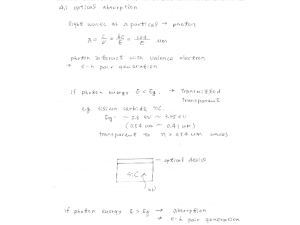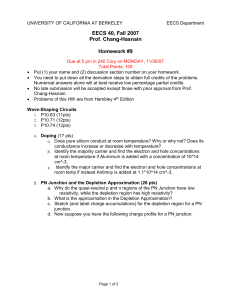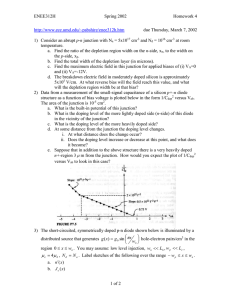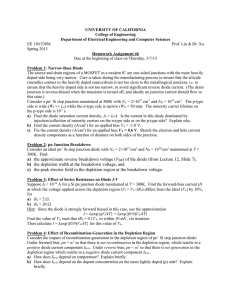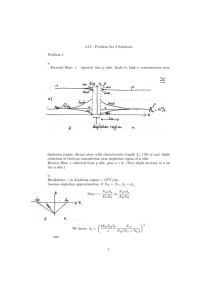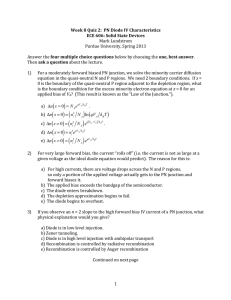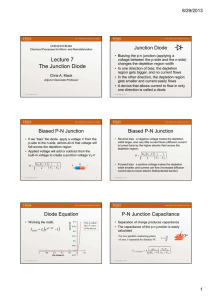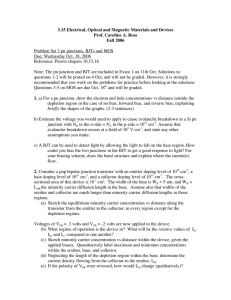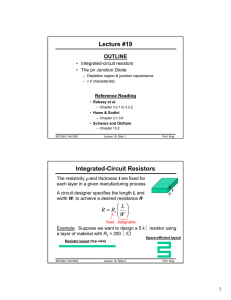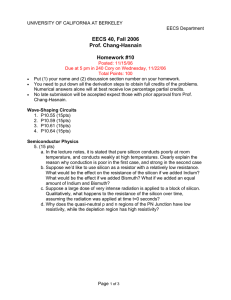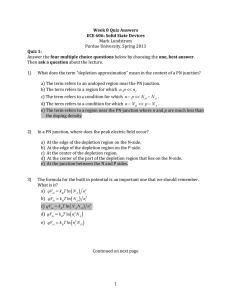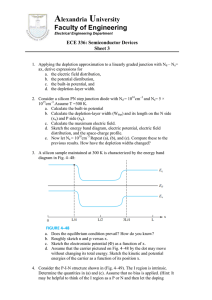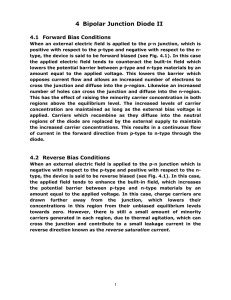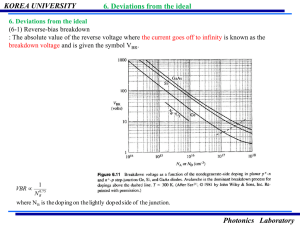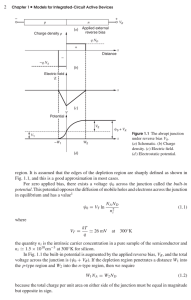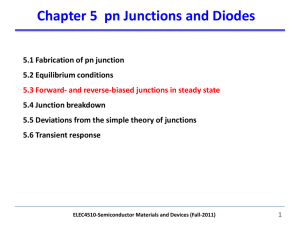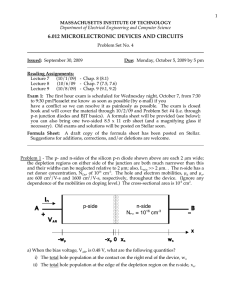Document 13555503
advertisement
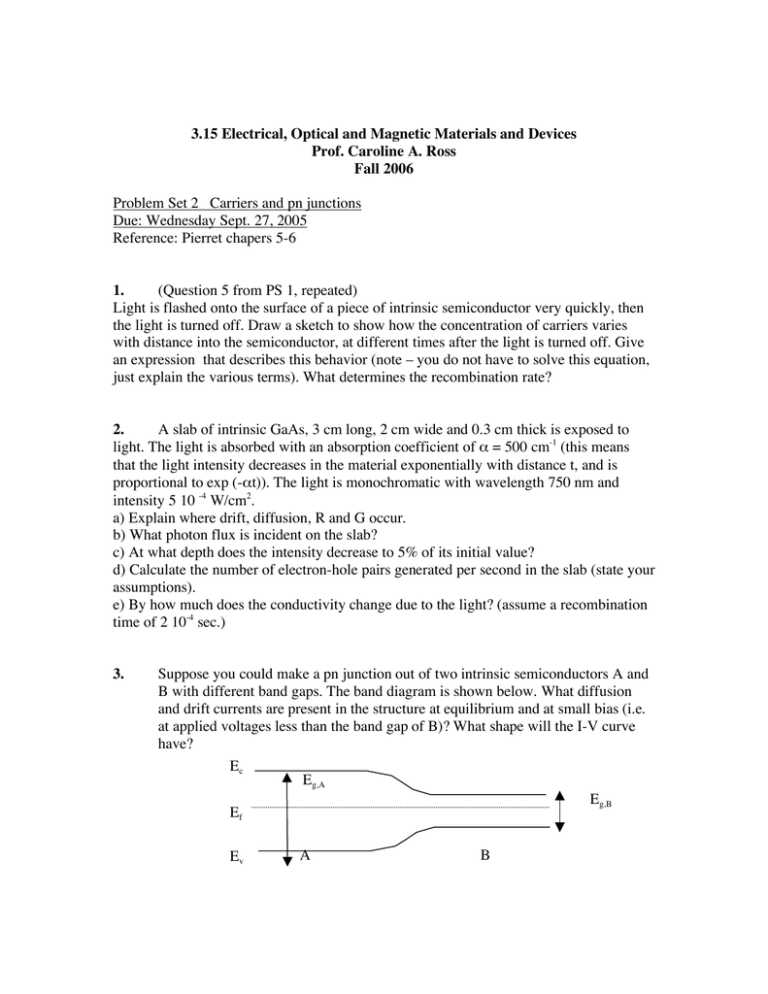
3.15 Electrical, Optical and Magnetic Materials and Devices Prof. Caroline A. Ross Fall 2006 Problem Set 2 Carriers and pn junctions Due: Wednesday Sept. 27, 2005 Reference: Pierret chapers 5-6 1. (Question 5 from PS 1, repeated) Light is flashed onto the surface of a piece of intrinsic semiconductor very quickly, then the light is turned off. Draw a sketch to show how the concentration of carriers varies with distance into the semiconductor, at different times after the light is turned off. Give an expression that describes this behavior (note – you do not have to solve this equation, just explain the various terms). What determines the recombination rate? 2. A slab of intrinsic GaAs, 3 cm long, 2 cm wide and 0.3 cm thick is exposed to light. The light is absorbed with an absorption coefficient of α = 500 cm-1 (this means that the light intensity decreases in the material exponentially with distance t, and is proportional to exp (-αt)). The light is monochromatic with wavelength 750 nm and intensity 5 10 -4 W/cm2. a) Explain where drift, diffusion, R and G occur. b) What photon flux is incident on the slab? c) At what depth does the intensity decrease to 5% of its initial value? d) Calculate the number of electron-hole pairs generated per second in the slab (state your assumptions). e) By how much does the conductivity change due to the light? (assume a recombination time of 2 10-4 sec.) 3. Suppose you could make a pn junction out of two intrinsic semiconductors A and B with different band gaps. The band diagram is shown below. What diffusion and drift currents are present in the structure at equilibrium and at small bias (i.e. at applied voltages less than the band gap of B)? What shape will the I-V curve have? Ec Eg,A Eg,B Ef Ev A B 4. Consider the distribution of holes in the n-type region of a p – n+ junction under forward bias. a) Sketch the variation of minority carrier concentration with position from the edge of the depletion region into the bulk n-type region under forward bias. Label the diagram with appropriate dimensions (e.g. Lp, pn,o) and provide a quantitative description of the peak height. What is a typical value for Lp? b) Is drift or diffusion responsible for carrier movement in this region? c) How does the sketch of part (a) change if the minority carrier lifetime is reduced by a factor of 10? d) How does the sketch of part (a) change if the length of the n-side beyond the depletion region were shorter than Lp? This case is called a ‘short diode’. e) Would a short diode provide higher or lower current at the same forward bias than a standard diode? 5. In a simple ‘step’ p-n junction like the one considered in class, we assume that the charge density is constant in the depletion region. Consider now a more realistic case where the dopant concentration varies with position as shown below. Assume the width of this graded region is equal to the width of the depletion region, and NA = ND. Show how the charge density, electric field and voltage vary across the junction. dopant concentration ND dn dp NA



